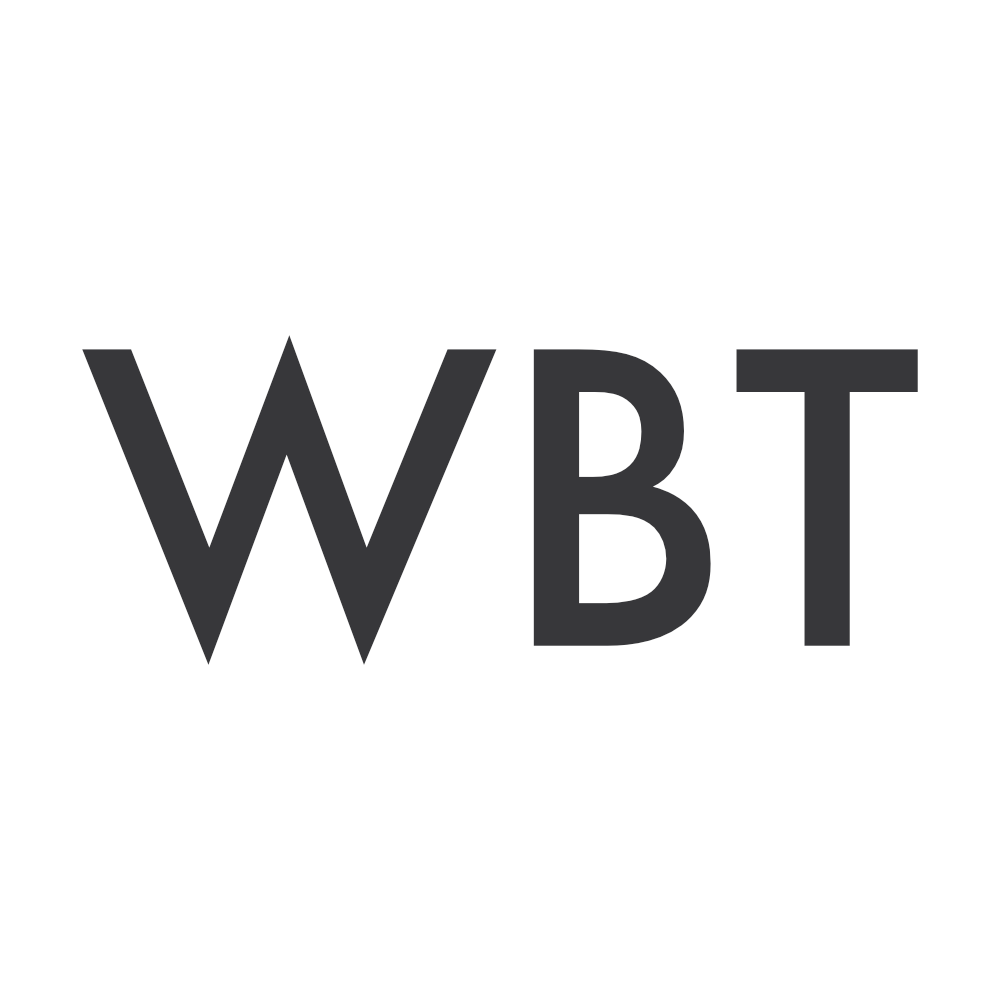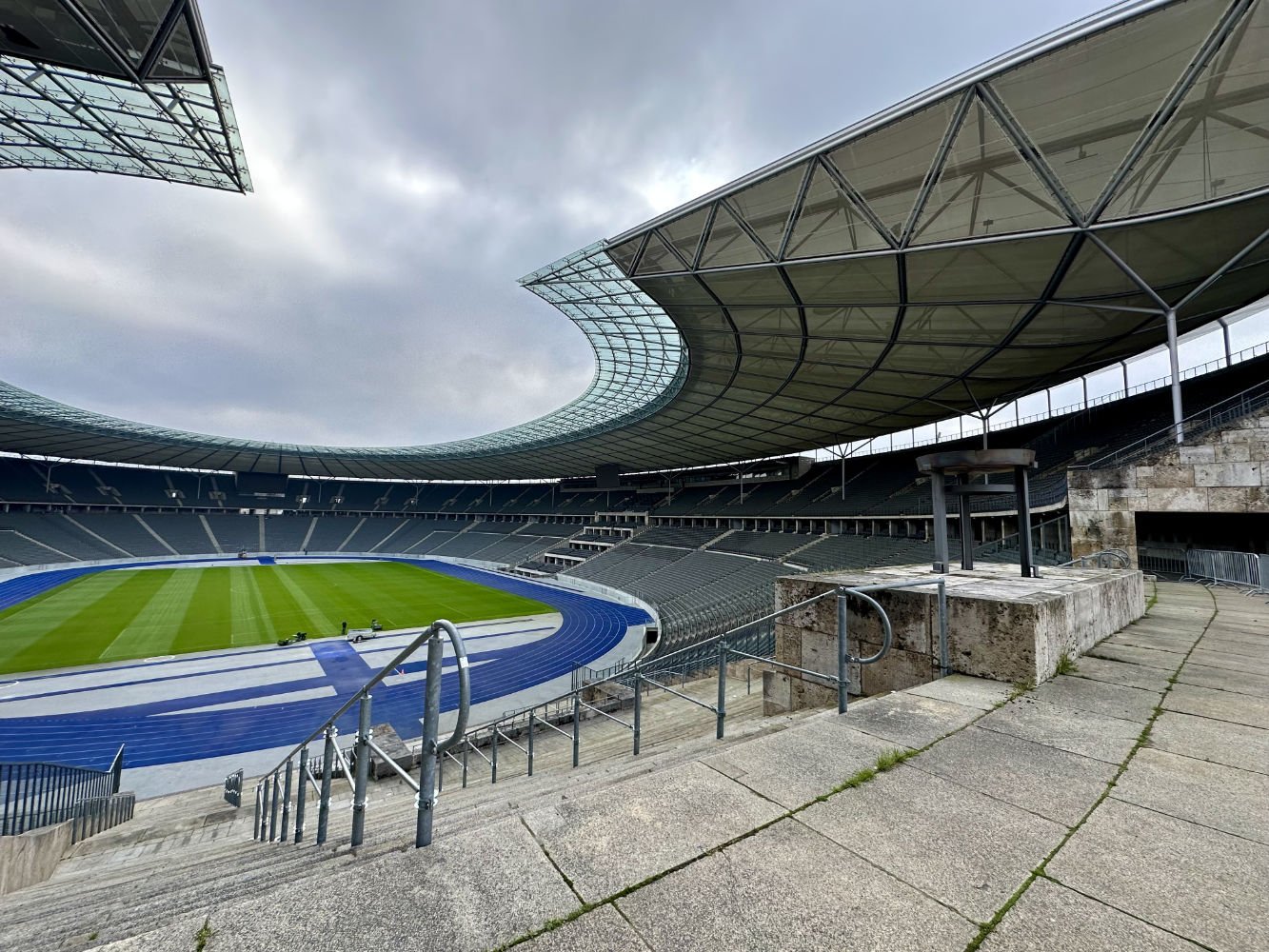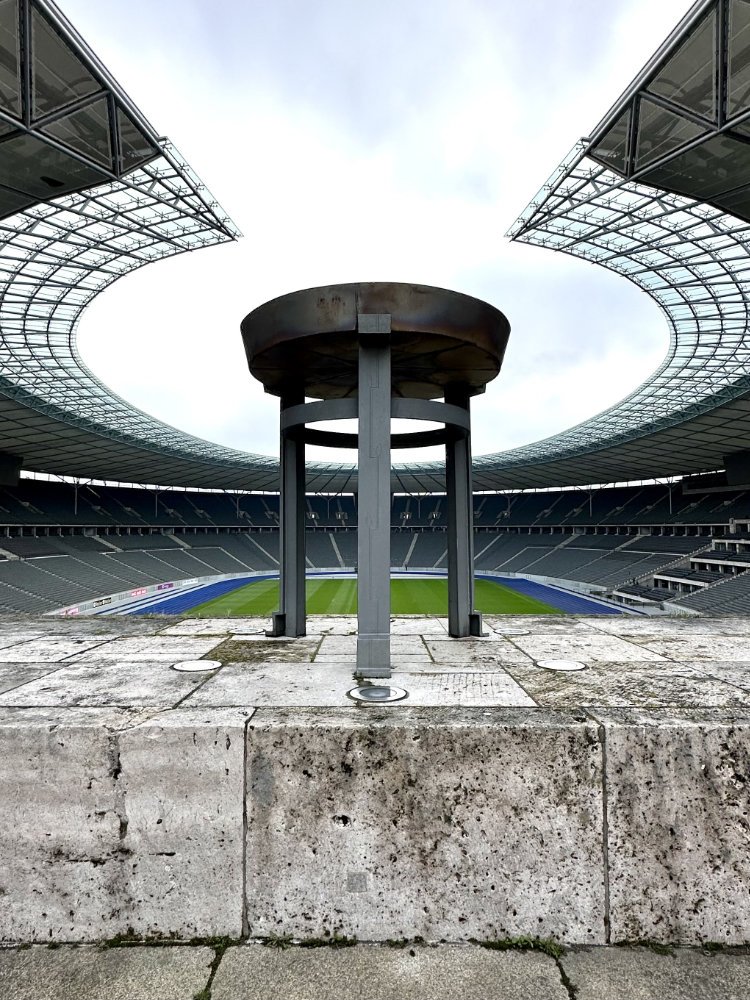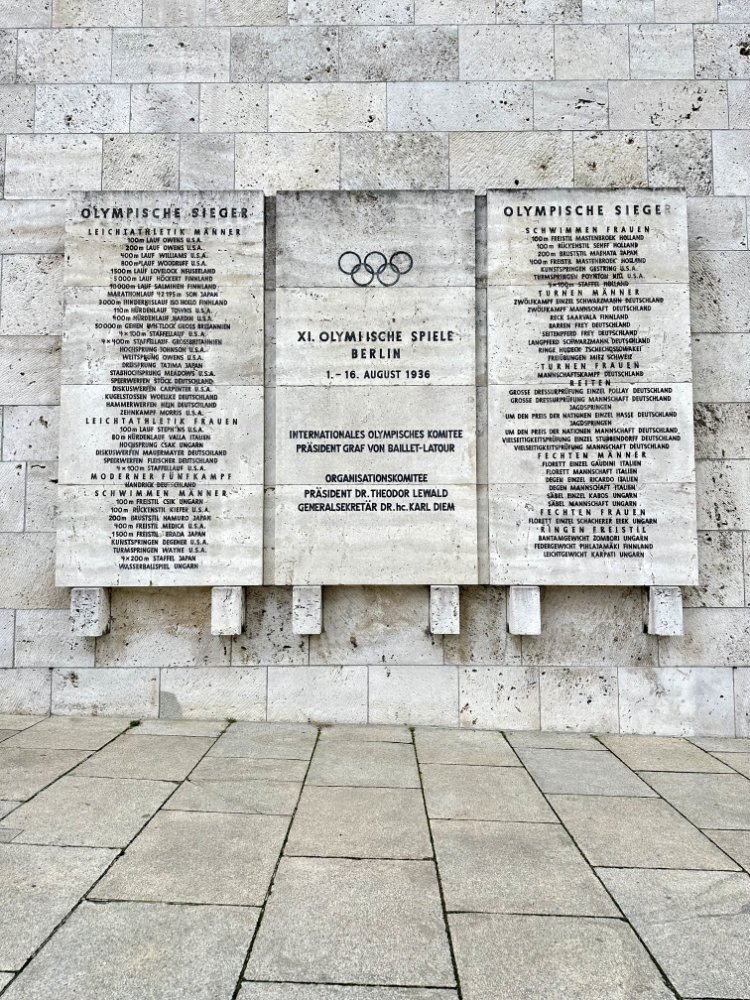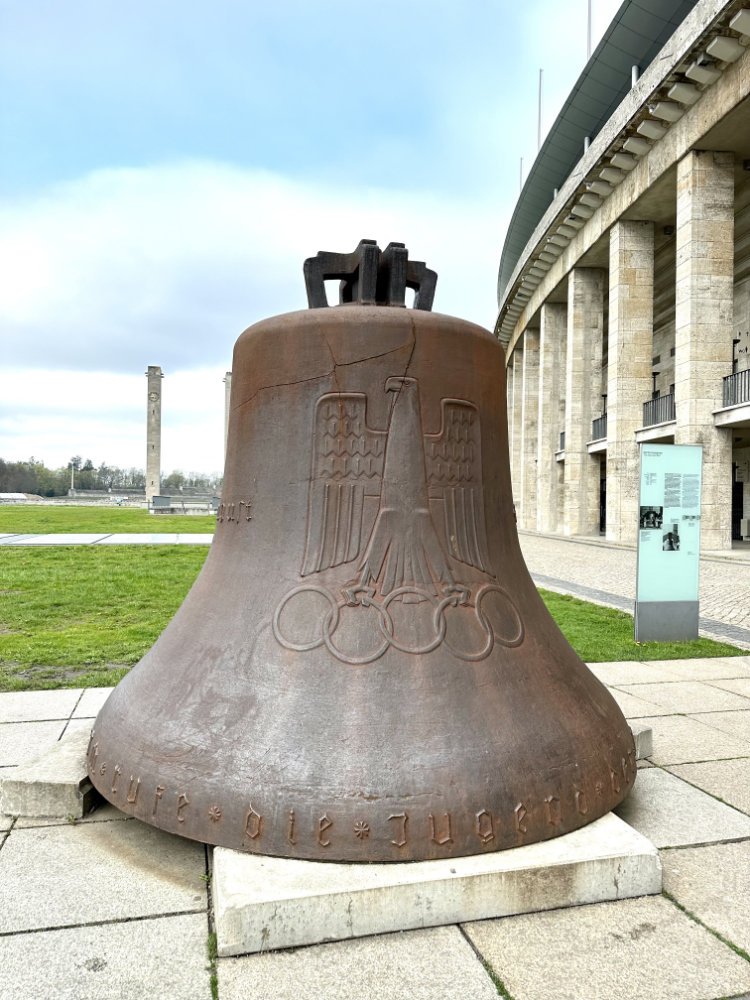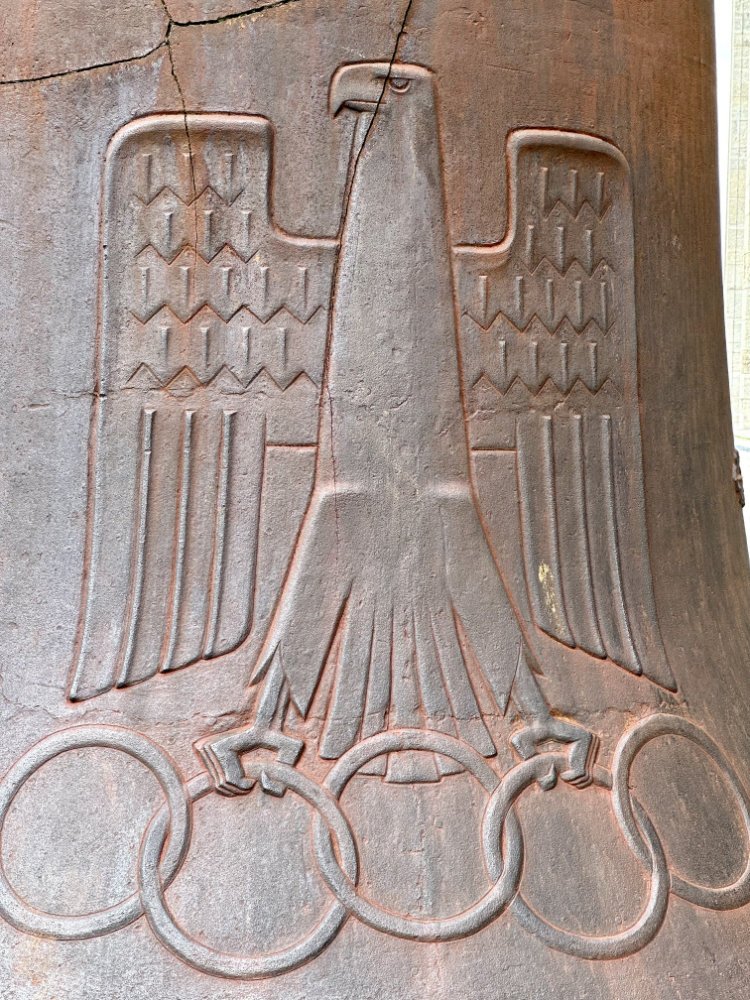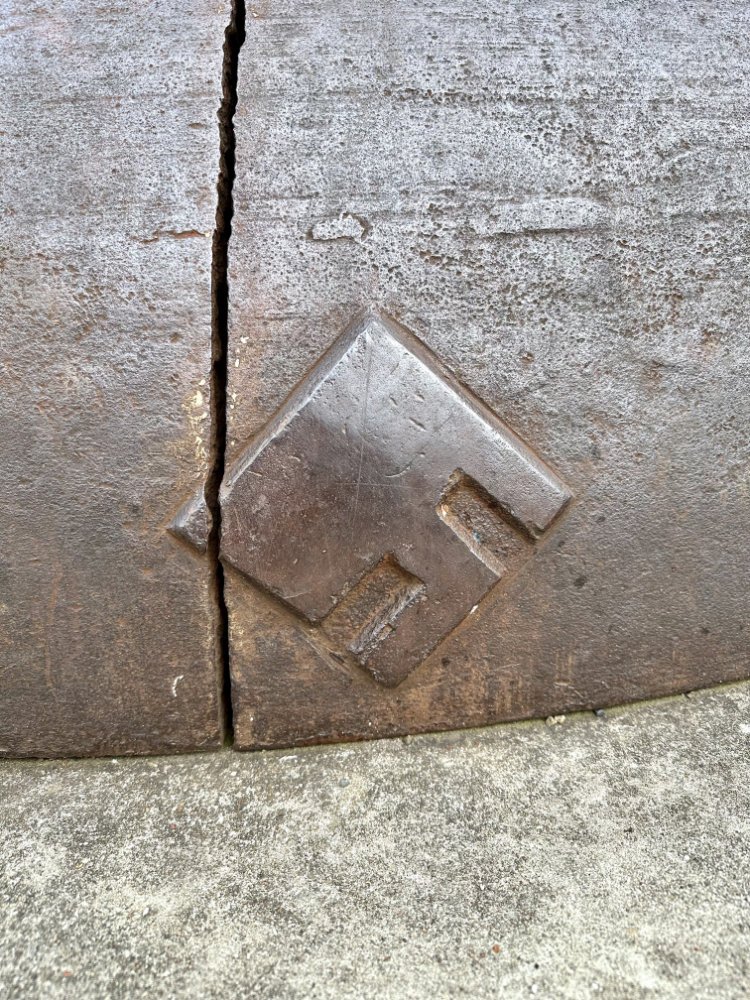High Resolution Original Map of Berlin from the 1936 Summer Olympic Games
What a find! Recently, I picked up an original tourist map intended for visitors to Berlin during the 1936 Olympic Games. It’s a little time capsule that reveals many contrasts and similarities between the Berlin of the past and the city we know today.
I’ve split this article into 3. As interesting as it is to pore over the historic map, I thought it important to give a short historical overview first. After that I’ve taken a look at some of the more interesting points on the main side of the map, and then a quick look at the reverse side, which is very 1936 Olympics-focused.
You can skip to the relevant sections using these links:
Section 1: Historical Overview of the Berlin 1936 Olympic Games
Section 2: The Map of Berlin during the 1936 Summer Olympic Games
Section 3: Map of the 1936 Olympic Stadium, grounds and Olympic Village
Historical Background for the Berlin 1936 Olympic Games
Of course, at this time Berlin was under the grip of the Nazi regime. At this point, Summer 1936, Hitler had been in power for a little over 3 years. In that time democracy had been dismantled, Jews, Sinti & Roma, and black people had been pushed out of jobs, if not out of the country, and the concentration camps, were becoming larger, more organised and more professional.
In fact, unbeknownst to the visitors of the 1936 Berlin Olympic Games, the Sachsenhausen Concentration Camp was being built & opened while the games took place…
The Nazi rise to power
The Olympics had been awarded to Germany before the Nazis took control. Nevertheless, the Nazis wanted to use the games as a projection of power; to impress their own people and allay the fears of the international community. In the years between WWI and Hitler becoming chancellor, Germany, particularly Berlin, had undergone huge political, and social changes, marred by two horrendous economic crashes in 1923 and 1929. Frequent elections and changes in government coupled with little practical or positive change gave way to a distrust in democracy in Germany, and the sharp rise in popularity of both the communists and the Nazis. By 1932 the Nazis had become the largest party in Germany, and by January of 1933 they were able to form a coalition government.
Of course, I’m simplifying an incredibly complex issue here, but what I want to get across is that the Nazis, with their messages of hate & violence, and promises of fixing a broken and morally broken Germany (in their words) had taken power in a country that had been bouncing from crisis to crisis since the outbreak of war in 1914.
The 1936 Olympics: A Show of Peace & Strength
When it came to the Olympics then, the Nazis were on the world stage. They knew that athletes, politicians, journalists and tourists would be coming to Berlin from across the world, and they wanted to impress them. It was their chance to show the world that the rumours of brutal treatment of Jews were being exaggerated, and that in fact, the Nazis had brought order back to a society that was in desperate need of it.
Of course, their plan was to lie. Through lavish parties with ambassadors and grand speeches from the likes of Joseph Goebbels the Nazis preached that the Olympics were symbolic of the nations of the world coming together peacefully. In reality the Nazis were preparing for war; Hitler had told his generals that he wanted to see the ‘complete Germanification of Europe’, and that they should be ready to fight by the end of the decade.
The Architecture of Power
The Nazis commissioned architect Werner March to build a stadium to match their ambition. A huge stone stadium, still in use today, inspired by the Colosseum, was built to host tens of thousands of excited fans. The Nazis knew how to put on a show. A massive stadium, a ‘cathedral of light’ created with searchlights, streets lined with their own Storm Troopers; the entire event was designed to show the world how powerful Germany was under Adolf Hitler.
Largely, I think it worked. The stadium itself is grand and impressive. The idea was that the Nazis were trying to link Hitler’s Germany to the great civilisations of European history; the Greeks and the Romans. Everything was on a huge scale. It’s an impressive site today, so it’s easy to imagine people being impressed in 1936.
It’s important to note that by this point the Nazis had gained complete control of the press. With no freedom of press, how much would the average citizen or visitor really known about the horrendous acts that were going on behind the scenes?
The Star of the show: Jesse Owens
The 1936 Olympic Games were also an opportunity for their Nazis, in their own minds, to prove true their racial theories; that the so-called Aryan race was superior to all other races of the world. Delightfully, they were proven wrong in spectacular fashion.
The star of the show in August 1936 was undoubtedly Jesse Owens. Owens, an African-American athlete won a remarkable four gold medals (100 metres, 200 metres, long jump, and 4x100 metre relay), breaking world & olympic records, and proving the Nazis wrong in their racist beliefs.
Stories of Hitler refusing to shake Owens’ hand are debated, and perhaps exaggerated. What we do know is that Hitler wanted to hand out medals to German athletes only, and was told by the head of the IOC, Henri de Baillet-Latour, that he would have to hand out medals to either all athletes, or none at all. Hitler chose to give medals to no one.
Owens was heralded as a hero in the United States, which was of course still a racially segregated society at the time. Owens was not spared the indignities of racial segregation and discrimination prevalent at the time. It is reported that when Owens was invited to the White House to be congratulated, he was not allowed to enter through the main entrance like the other guests. Instead, Owens had to enter through a separate entrance designated for service staff or servants.
Where to get more information on the 1936 Olympics in Berlin
I really recommend Oliver Hilmes’ book, 16 Days in Berlin. It’ll give a great overview of what was happening in the city - not just the stadium - on a day-by day basis. You get a sense of the excitement, deceit, terror, everything. It’s a quick read, and I really enjoyed it.
Visiting the Stadium Today
It’s possible to visit the Olympic Stadium today. Entrance is cheap and there are a few info boards scattered around, but in my opinion it’s worth taking one of their tours (sadly, I’m not on their guide list!) to see a bit behind the scenes and hear some of the wild stories from the games.
The Stadium hosts concerts & football games, too. This year it will host 6 UEFA Euro 2024 matches, including the final!
The Map of Berlin during the 1936 Summer Olympic Games
View the map in super high resolution
Poring over historical maps, finding your house, seeing what’s changed and what hasn’t; maps are a treasure trove for history nerds like me. If you’re reading this then I guess you’re a history nerd, like me. So, I took several high-resolution photos of the map and stitched them together into one rather large image. It’s about 100mb, so it might take a second to load. Click the button to see it.
Below, I’ve outlined some of the key differences between the 1936 map and the Berlin of today that I’ve noticed. I haven’t listed every single difference, because of course I don’t know every single street in Berlin. These are just the things that jumped out at me. If you see anything else interesting and want to tell me then give me a shout on one of my social channels.
Horst-Wessel-Platz
Among many differences you can find on the map are places named after the Nazis themselves. Horst Wessel, a young and committed Nazi that had been shot and killed in an argument with his landlord about something to do with his girlfriend, was portrayed as a martyr for the cause by the fascist regime, allegedly he was a victim of the communists.
The square that bears his name in this image had been the site of a murder of two policeman at the hands of the communists in 1931. Among the accused was Erich Mielke, the future head of the East German secret police, the Stasi.
Prior to being named after Horst Wessel, the square was named Bülowplatz, named after the former German chancellor, Friedrich Wilhelm Freiherr von Bülow. After WWII it was briefly named after the founder of the German communist party, Karl Liebknecht, but was quickly renamed after another prominent German communist, Rosa Luxembourg. both Luxemburg and Liebknecht had been killed by proto-fascists in January 1919.
Berlin’s disappeared train stations
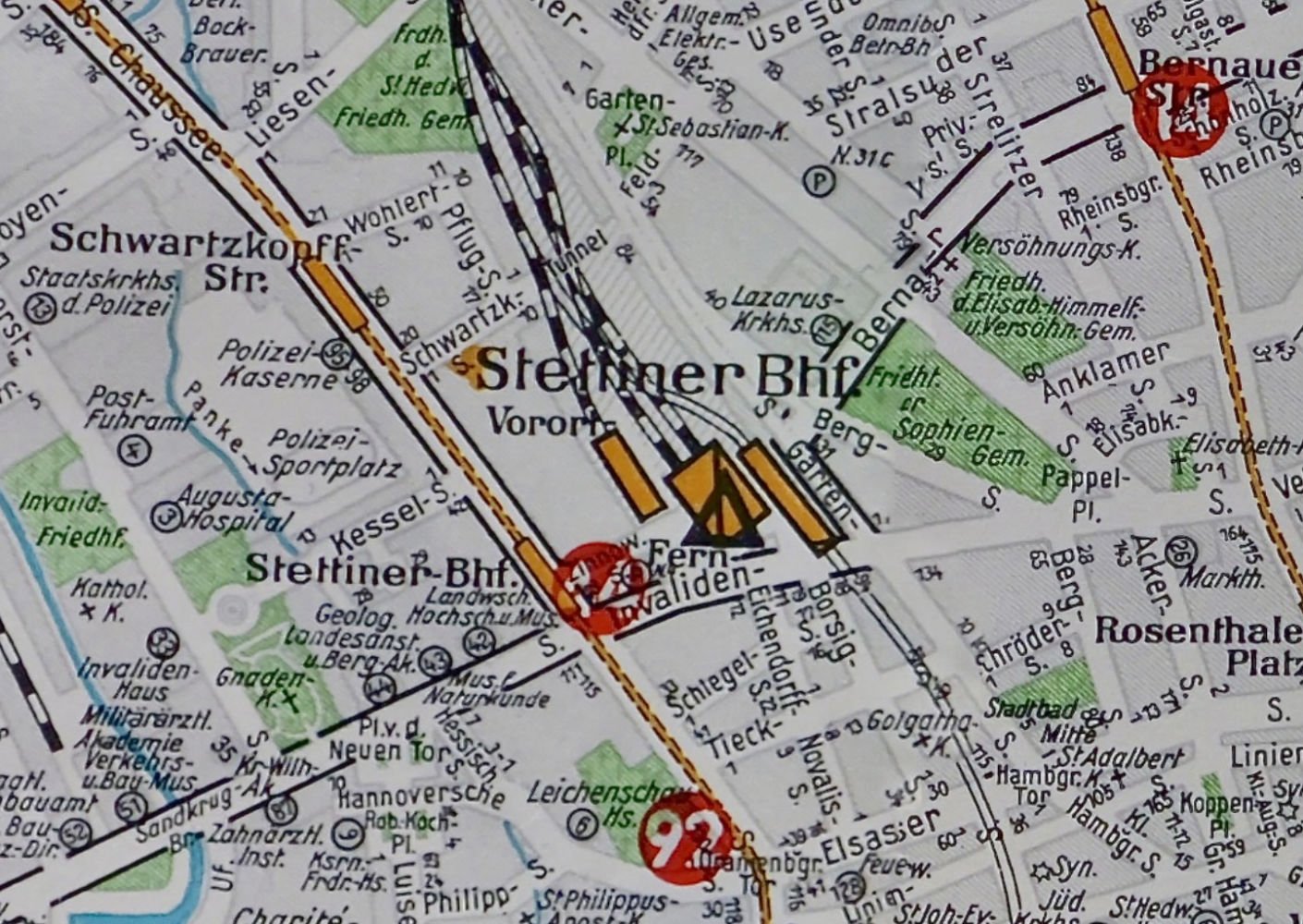
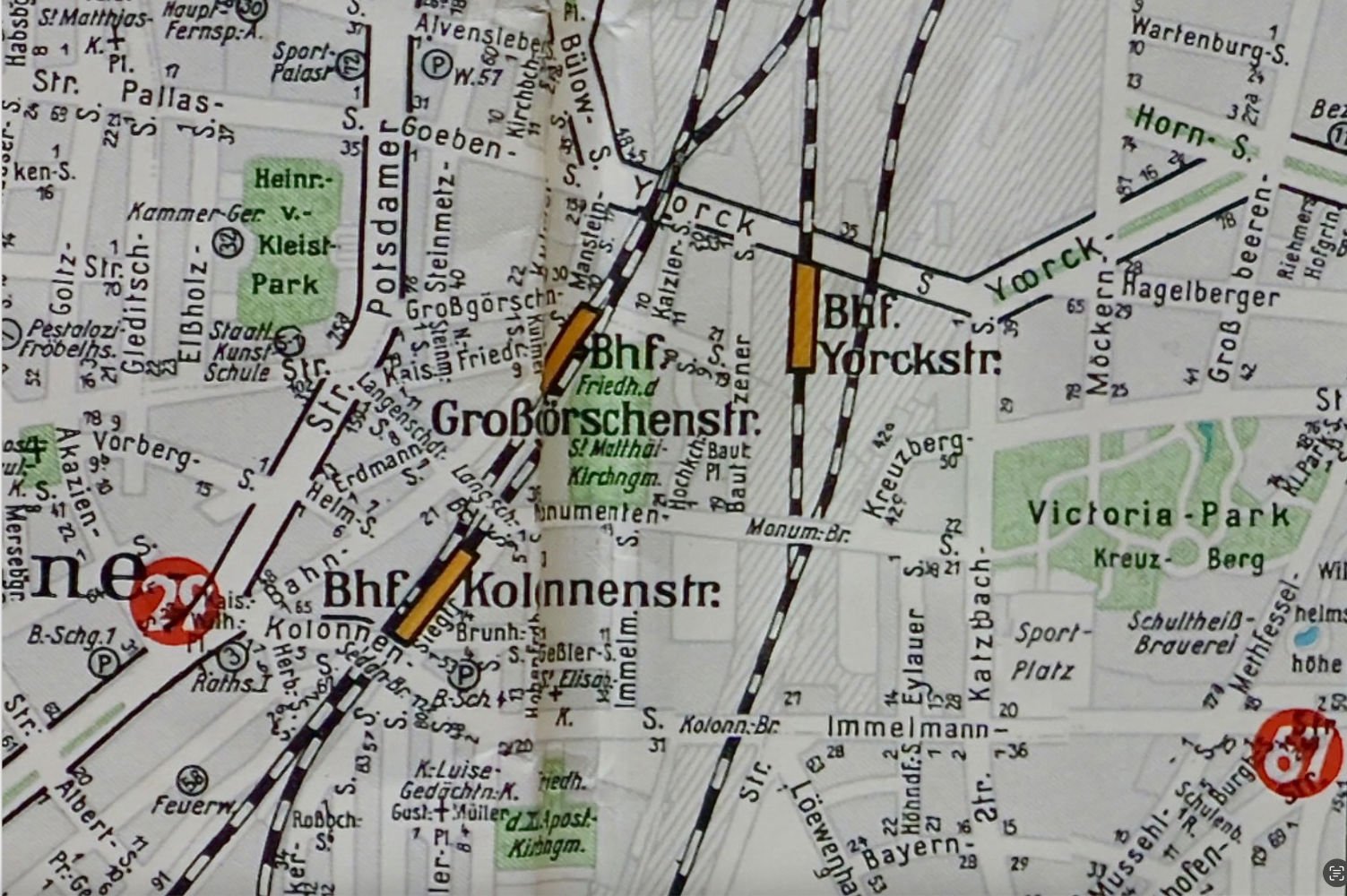
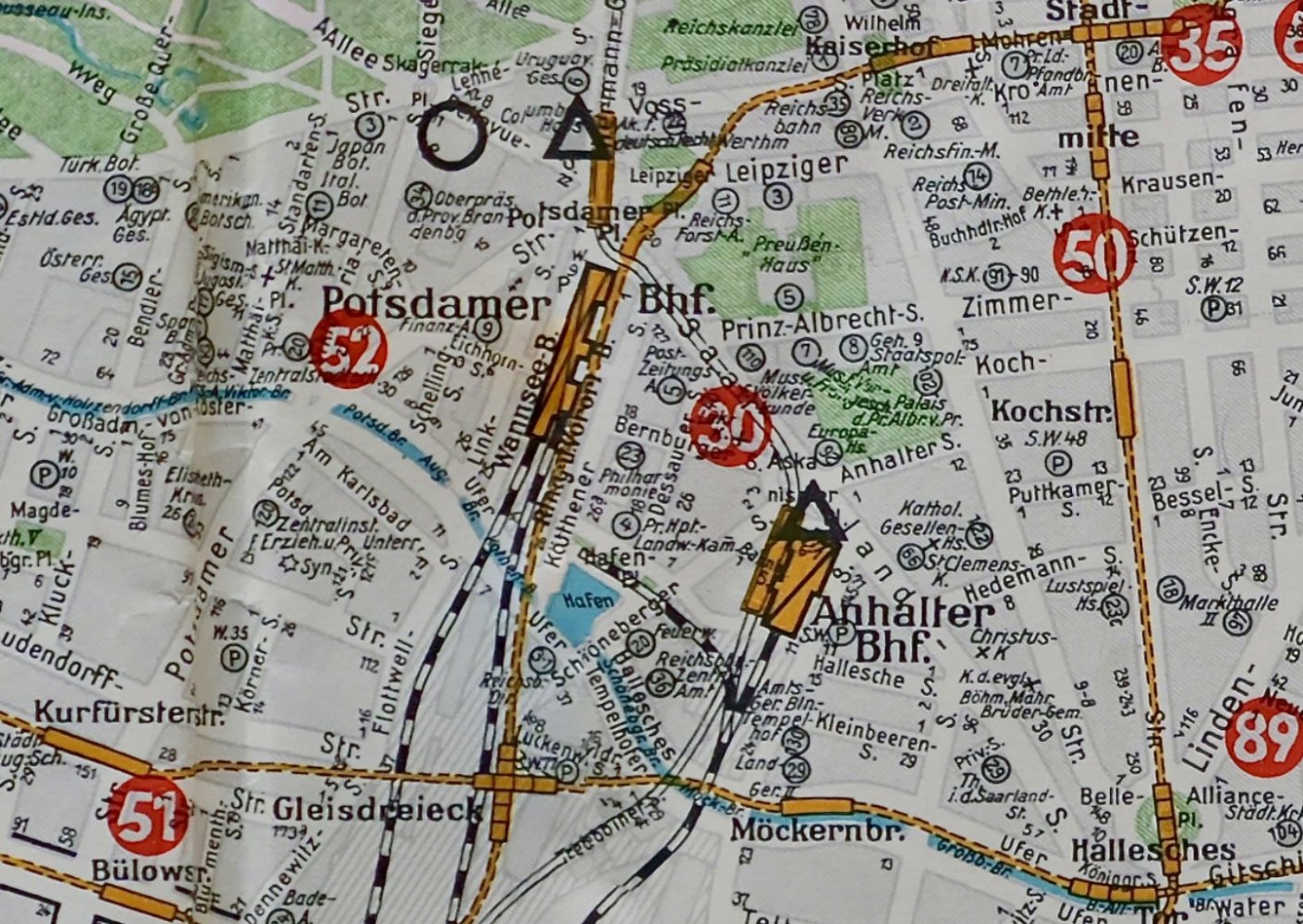
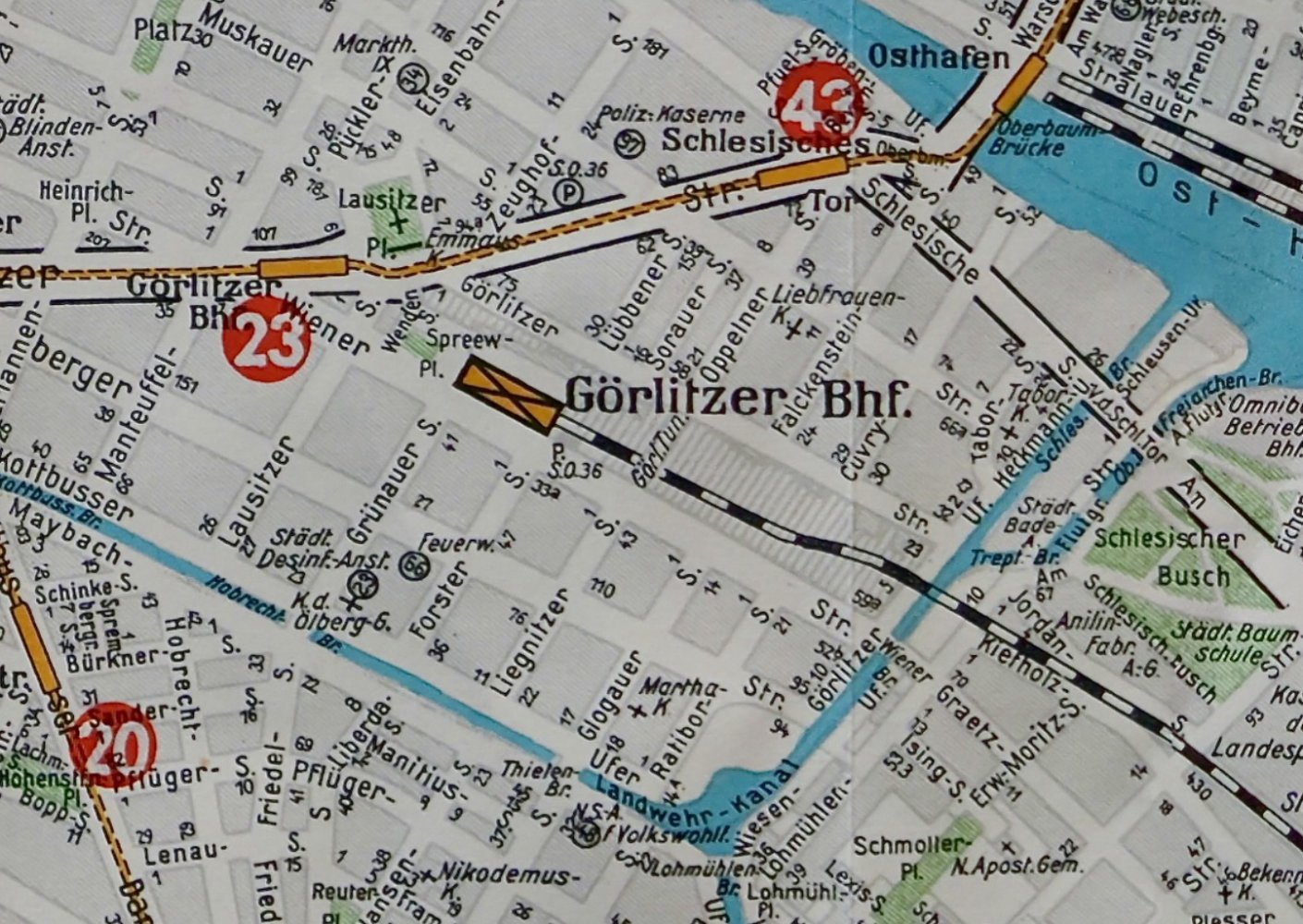
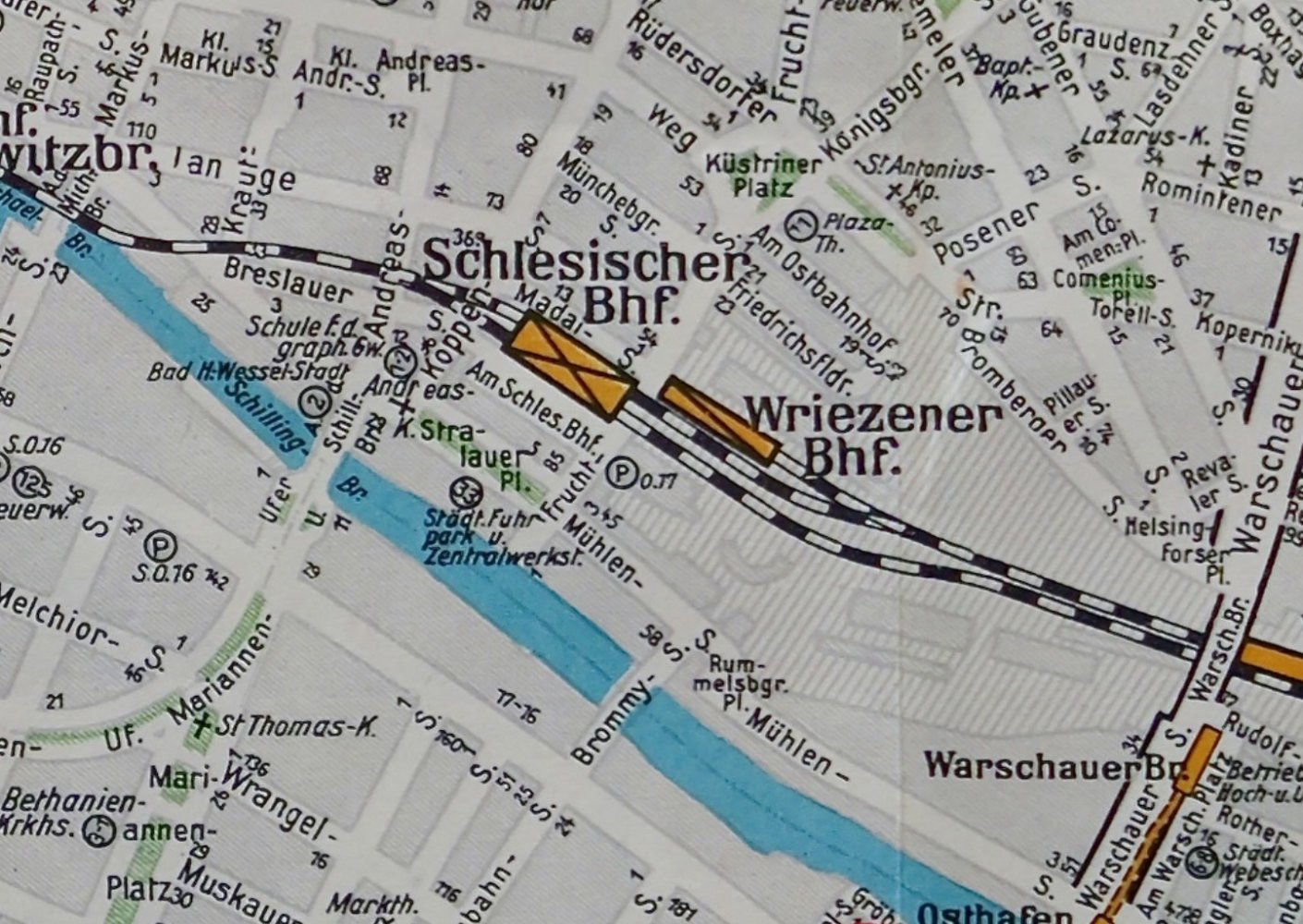
As the industrial revolution took hold, Berlin started to boom. The oldest train systems in Berlin were nearing 100 years old by the time of the 1936 Summer Olympic Games. While some visitors would have arrived by air, landing at Tempelhof Airport, the majority would have arrived by train in Berlin’s grand terminus stations like the Stettiner Bahnhof, Potsdam Bahnhof, Anhalter Bahnhof, and Görlitzer Bahnhof. None of these exist today.
Of course, some stations’ names have changed, too. Lehrter Bahnhof is now Hauptbahnhof, and Großgörschenstr. station is now the S1 section of Yorckstrasse station.
The Density of Central Berlin
Here you can see the heart of old Berlin. You can clearly see the museums of Museum Island, note that the Bode Museum still has its original name, the Kaiser-Friedrich-Museum. The large street in the centre of the image, Kaiser Wilhelm Strasse, was renamed in East Berlin (again) for the communist, Karl Liebknecht. Where you see the word “Kaiser” in big letters you can see several small, winding streets, especially beneath the red number 45. It’s this area that is now the wide, open space beneath Berlin’s TV Tower.
Wilhelmstrasse Government Quarter
Along Wilhelmstrasse you can see many government offices. Going back long before the Nazis, Wilhelmstrasse was the heart of the government district in Berlin; during its time as both Prussian and German capitals. The Chancellor’s and President’s offices can be clearly seen, as can “Hermann-Göring-Strasse” (today Ebertstrasse) on the left side of the image. Above the number 9 you can see the “Reichsministerium für Volksaufklärung und Propaganda”, or the ‘Ministry for the Enlightenment of the People and Propaganda’, headed by Dr. Joseph Goebbels. This building survived the war and was used by the East German government, as well as today’s government, where it serves as the Bundesministerium für Arbeit und Soziales, or Federal Ministry of Labour and Social Affairs.
The Map of the Olympic Stadium, facilities, and Olympic Village from the 1936 Olympic Games
There’s still plenty to see on the reverse side. Not least a welcome to the city in four languages; German, French, Spanish, and English. It’s mostly just some marketing fluff for the Dresdener bank, but I know some of you will want to read it, so here’s the English version:
“To visitors of the Olympic Games 1936
In presenting to the visitors of the Olympic Games this map of Berlin, we wish to give them a comprehensive survey of the town and localities where the events will take place. At the same time we hope the map will assist them in deciding which of the numerous branches of the Dresdner Bank is best situated for their convenience.
The Dresdner Bank places at the disposal of visitors from other countries, either holders of Checks or Letters of Credit or beneficiaries of Payment Orders issued in "Registermark" or other currencies the facilities of about 350 branches all over Germany, 80 of which are in Berlin. We beg to call attention to the special advantages of the
“Registermark Circular Letter of Credit of the Dresdner Bank”
which is obtainable at most of the leading banks and travel agencies of all countries. It is payable in no less than 1200 different towns in Germany where there are either branch offices or corres-pondents of our Bank. An efficient staff in all our branches will gladly render any assistance required and give expert advice to visitors to the Olympic Games. To visitors arriving by sea we espe-cially recommend our branches in Hamburg (Jung-fernstieg 22/23) and in Bremen ("Bremer Bank" Domshof 8/9)for any kind of information required.”
Thrilling stuff, I’m sure you’ll agree.
View the reverse side in super high resolution
I made another stitched image of the reverse side. It’s a bit prettier than the map side, but perhaps not as interesting. Still, it’s well worth a look in my opinion. So, if you’d like to get zooming in and exploring, hit the button below.
The plan for the Olympic stadium is both bright and clear. Although football is listed as number 1, football matches were held throughout the town, with the most memorable being Norway's victory over Germany at the Poststadion, which resulted in Germany's elimination from the competition. This particular match was observed by a visibly displeased Adolf Hitler, according to Goebbels’ diaries. As far as anyone can be sure it was Hitler’s first and only football game.
Even though London, home to the world’s oldest underground train network, had already switched to a non-geographically accurate schematic-style map at the beginning of the ‘30s, Berlin would be very far behind on this particular design innovation. The lines weren’t even colour-coded, let alone presented on a clear map, until the Berlin Wall had gone up, which of course threw a spanner in the works.
Just like everything at the 1936 Olympic Games in Berlin, the grounds were huge! Much of this area is still in use, including the Waldbühne, which is now an epic concert venue (much, much better than the stadium itself for a rock show).
From this plan you can see the multiple train platforms just for the stadium itself. It’s a little eery arriving there now, as they’re hardly ever in use, which makes sense, but still.
Just north of the stadium you can see the Olympic pool (“Schwimmstadion”), where a wealthy American tourist named Carla de Vries planted a big kiss on Hitler during the Games. The German press tried to hush this up as it was a severe breach of security.
Today’s Berlin Marathon, taking place in September every year, runs right through the city. Selfishly speaking it makes life a bit tough for tour guides, but there’s a wonderful atmosphere and I’m lucky enough to meet many runners every year.
In 1936 however, the marathon was very much out of the way. It went through the beautiful Grunewald forest. At the very bottom of the image you can see the beautiful lake, Schlachtensee, with its own train station. It’s probably Berlin’s most popular lake to this day.
I recommend exploring the Grunewald today. Here’s a little walk I created that takes in some history for you.
Even though the Havel river runs right next to the stadium, the Dahme (Berlin’s often forgotten other, other river) hosted the Regatta course. A lot of Berliners never visit this area, Grünau. There’s a ferry that takes you over the river these days. Start from Grünau station and work to the river. You can then cross over and explore the beautiful Wendenschloss area and walk up the Müggelberg to the Müggelturm for lovely views.
The 1936 Olympic Village “Hosted by the German Wehrmacht”
The Olympic Village was of course a buzzing place during the 1936 Olympic Games. Each country brought their own chef, and own food and athletes were constantly coming and going - once their events were done, many athletes left entirely.
The Olympic Village was under the command of the Wehrmacht, the name for the German military under the Nazis. This was of course distinct provocation. Germany had agreed to have a very limited military after WWI as part of the Treaty of Versailles. The treaty was incredibly harsh and wildly unpopular in Germany. Even though some of its terms were modified in the 1920s, the Nazis were able to capitalise on the unpopularity of the treaty by basically tearing it up - sticking a middle finger up to the Brits and the French, and building up its military anyway.
Wilhlem Fürstner was in charge of running the show at the Olympic Village. Fürstner was both a committed and conflicted Nazi. Less than a year before the 1936 Olympic Games took place, in October of 1935, the Nazis introduced the infamous Nuremberg Race Laws. These pseudo-scientific laws, “The Law for the Protection of German Blood and German Honour”, and “The Reich Citizenship Law“ attempted to outline who was of ‘pure German blood’ and was not. Those that were not, including Jews, were stripped of their citizenship. The Nazis were attempting to use the image and respect of science to further their political goals.
This was a big problem for Fürstner. One of his grandfathers, although baptised Christian, was born Jewish. According to Nazi ideology that made Fürstner a fundamentally flawed individual; a threat to the ‘purity of the German race’.
On the 19th of August, 1936, on the grounds of the Olympic Village, Fürstner shot himself and took his own life.
